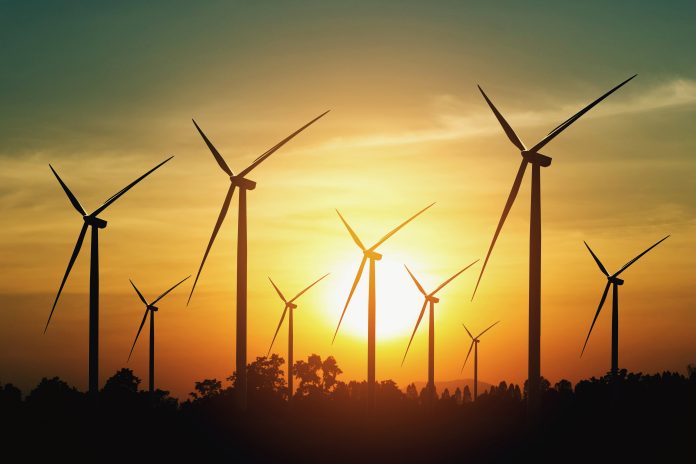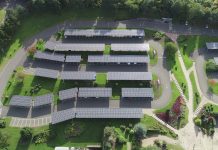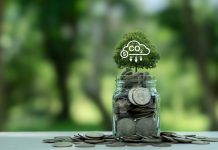Filippo Carzaniga, Executive Chairman at FIMER, argues that solar will play a vital role in Asia’s renewable energy success
Following the recent COP26 climate summit, the world is now broadly in agreement that to achieve a drastic reduction in carbon emissions, there needs to be a major shift away from fossil fuel generated energy towards renewables. For large and incredibly diverse regions such as Asia, which ranges from the world’s largest carbon emitter to communities with little access to electricity, the challenge is significant.
That said, many economies in the region have committed to ambitious carbon reduction targets. Both Japan and South Korea have pledged to achieve net-zero carbon emissions by 2050 and China by 2060. In addition, at COP26, India announced its own net- zero target of 2070.
“The Southeast Asia region has significant periods of sunshine, so is perfect for solar PV, while the coastal areas are particularly suited to wind power.”
As such, Asia has become one of the biggest growth markets for renewables, and we know from our extensive experience in the region, that solar photovoltaics (PV) is proving to be one of the most popular sources. According to a recent report from Global Data, the Asia Pacific region has emerged as one of the global leaders when it comes to cumulative solar PV capacity.
Its analysis shows that the region had a 58.9% share of the global PV market in 2020, and this is predicted to rise to 59.8% by 2030, with China leading the way and Japan and India also featuring in the top five countries. It is also predicted that, by 2030, India will overtake Japan to become the third-largest global market for solar PV behind China and the U.S., supported by rapidly growing regions such as Vietnam, Nepal and Singapore.
So, what is driving this growth?
Ambitious government targets
To achieve net-zero, many of the region’s economies are setting ambitious renewables targets. For example, Japan recently announced it is aiming to have 108 GW of solar capacity by 2030, 1.7 times higher than its previous target, to help it reduce its emissions by 46% by 2030 compared with 2013 levels.
Similarly, India recently achieved its 100 GW milestone of installed renewable energy capacity, with a further 50 GW of renewable infrastructure under installation and approximately 27 GW under tender. India has also increased its ambition to install 450 GW of renewable energy capacity by 2030.
This is being bolstered by the dramatic fall in solar panel prices, solar inverters and more cost-effective mounting and tracker systems and increased efficiency of solar technology.
Favourable climates for renewables
Asia benefits from a range of weather conditions that make it favourable for the deployment of renewables. For example, the Southeast Asia region has significant periods of sunshine, so is perfect for solar PV, while the coastal areas are particularly suited to wind power. The different renewable sources complement each other, with solar PV peaking during the day and throughout the dry seasons, and wind able to supplement this during the evenings and colder, rainy seasons.
Need for self-sufficiency in emerging markets
The desire for more locally generated energy is also a key factor in the growth Asia’s renewable energy, particularly solar, wind and hydropower.
As well as delivering clean energy, renewables also provide greater self-sufficiency, particularly for those countries relying on imports of fossil fuel power. As such, solar is often installed to supplement other renewable sources or as part of a hybrid plant.
“A report from Fitch Solutions estimates that nearly 10 GW of new floating solar capacity will be installed in the next five years, with Asian markets such as China, South Korea, India, Thailand and Vietnam expected to be key markets.”
For example, Nepal is predominantly dependent on hydropower for its electricity generation and aims to achieve 400 MW of renewable energy by 2022. However, the country also needs an additional 200 MW of energy to become self-reliant during the dry season, when its power generation drops due to a fall in water levels in the rivers. As such, several solar-powered projects are in the pipeline to help bridge the power gap when hydropower is not possible.
Similarly, India’s government has a vision for ‘AatmaNirbhar Bharat’ or ‘Self-Reliant India’ and recently opened its largest single-site solar power plant, the REWA Ultra Mega 750 MW solar park in Bhopal which is predicted to reduce carbon emissions by up to 1.5 million tonnes of CO2 per year.
New trends and technologies
One of the most exciting trends is the rise of floating PV. A report from Fitch Solutions estimates that nearly 10 GW of new floating solar capacity will be installed in the next five years, with Asian markets such as China, South Korea, India, Thailand and Vietnam expected to be key markets.
For example, two floating solar PV systems of 1.5 MW each at the Bedok and Lower Seletar Reservoirs are projected to reduce carbon emissions by about 1.5 kilotonnes annually. This dual use floating solar initiative also aims to boost Singapore’s solar energy production, while powering its water system with renewable energy.
We are also seeing growth in the use of storage systems across all market segments – utility-scale, commercial & industrial and residential – particularly in markets such as Taiwan, Vietnam and the Philippines. For major energy users, this helps to both stabilise the grid and provide a continual source of energy during times of intermittency. For the residential market, it is supporting the rise of the ‘prosumer,’ enabling consumers to both become self- sufficient, while also allowing them to generate additional income by selling excess energy back to the government.
A bright future for Asia’s renewable energy
COP26 saw many countries including South Korea, Indonesia, Vietnam and Singapore sign an agreement to phase out coal power throughout the 2030s and 2040s. And, although Japan, China and India were absent from the deal, the move to renewables and reduction of the reliance on coal and other fossil fuels means that the growth of clean generation sources, such as solar PV, will continue across Asia over this next critical decade. Companies like ours have had the pleasure of working on some of the most prominent projects in the region and are excited to see what comes next.











